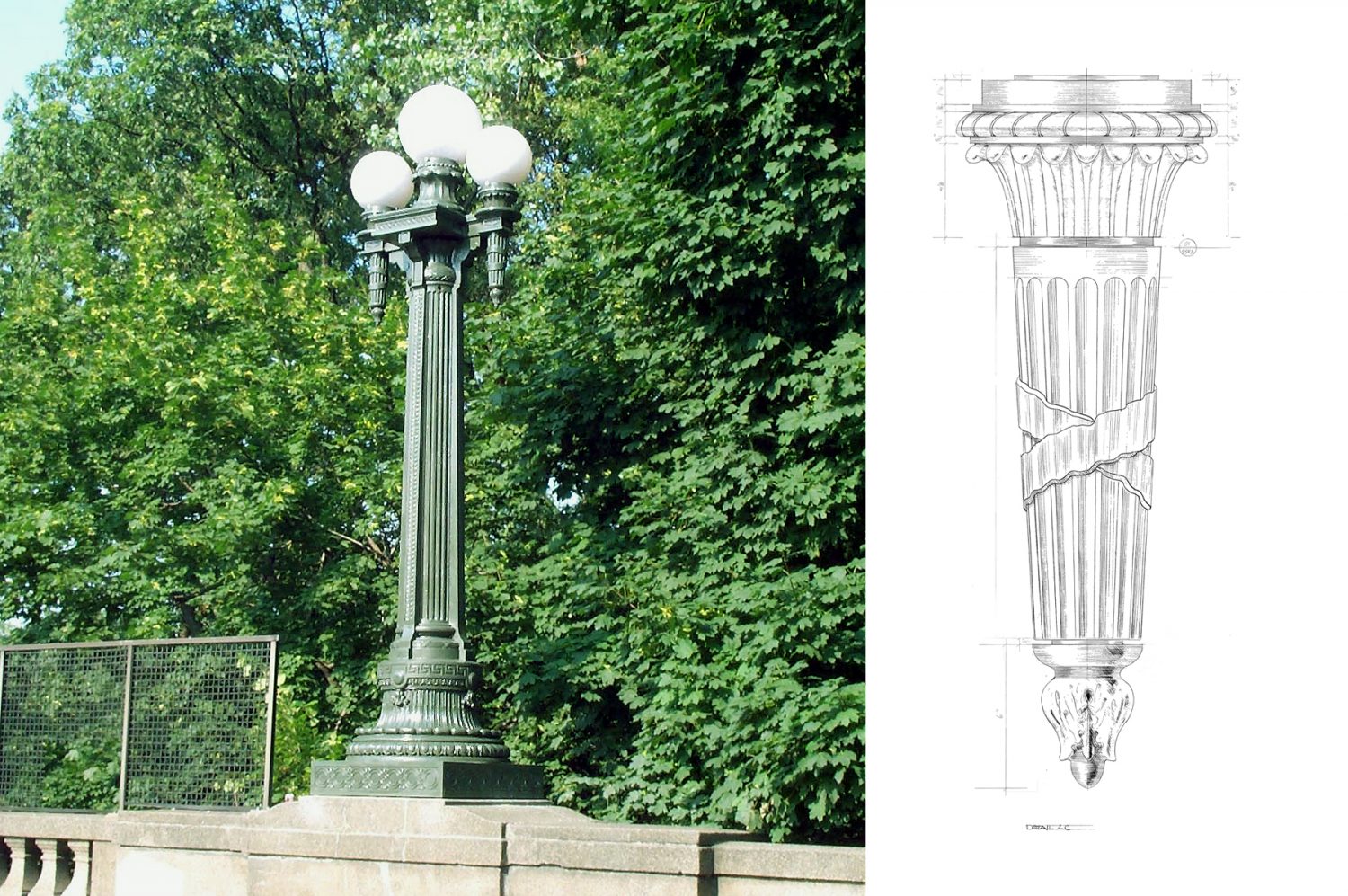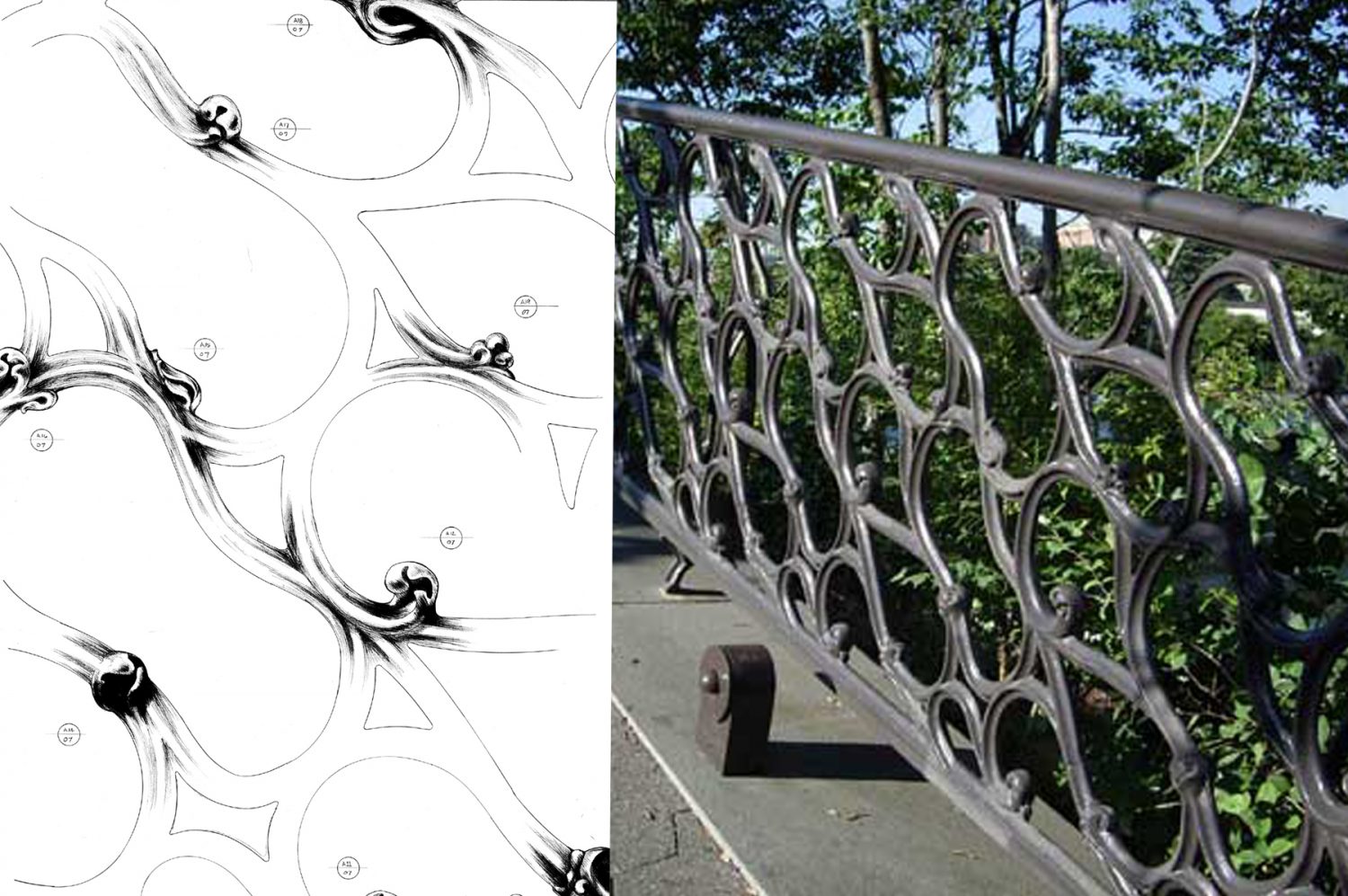Replication & Restoration
Various Projects
Beaux-Arts Period
Around 1830, cast iron exploded as an architectural and art form during the Beaux-Arts period. Influenced by the elaborate Beaux-Arts buildings and gardens in France, American architects found the perfect medium for their ornate designs: cast iron.
Cast iron had been used earlier in smaller ornate installation such as elaborate fire backs, but improvements in techniques in the 19th century enabled finer casting of decorative objects such as statuary railings and posts. Further advances in cast iron designed for structural purposes led to its use both as decorative ornamentation and for complete facades of buildings, bridges and fountains. Refinements developed during the Industrial Revolution made cast iron less expensive than carved stone and enabled architects to design the elaborate facades and embellish them with architectural elements such as fences and balconies.
At the same time, massive buildings were designed and constructed that featured elaborate exteriors with arched windows flanked by paired columns with ornate details and interiors featuring grand staircases and vaulted ceilings. Reminiscent of Greek and Roman architecture, the addition of garlands, cartouches and inscriptions were defining elements of the Beaux-Arts architecture.
Robinson Iron’s Restoration & Replication of Architectural & Ornamental Treasures.
Many innovations in metallurgy and foundry technology have occurred in the years since Robinson Iron started operation. Traditional manual labor is now augmented with sophisticated computerized automation. However, many special skills used in patternmaking and finishing are being preserved and passed along to a new generation. The “old school” methods are still employed in woodworking and in the creation of new ornamentation. Robinson Iron’s team includes a specialized mix of artists, craftsmen, engineers, foundrymen and fabricators.
New technology and construction methods now enable Robinson Iron to disassemble entire facades and other large cast iron structures and transport them to the plant in Alexander City, Alabama, for complete detailed restoration to their original glory. Then they are returned and installed to once again become a part of the preservation of historic ornamental and architectural treasures.










